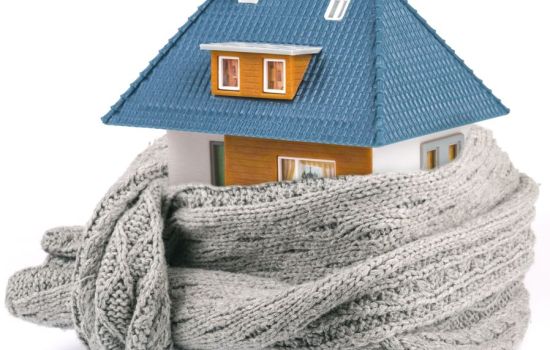Could your building soon be a giant battery?
As everyone is going electric, the energy transition is putting severe strain on existing energy grids and infrastructure. Many experts fear that massive investments will be required. But I believe there’s still plenty of untapped potential in existing systems and solutions. Smart climate control systems can turn buildings into thermal buffers that respond in a flexible manner to the energy that is available at any given time.

The energy transition is in full swing, and it looks like it’s here to stay. Fossil fuels – oil, natural gas and coal – are systematically being phased out and replaced by electrical energy, preferably from renewable sources. Solar panels and heat pumps are being installed at breakneck speed, while buildings are disconnected from the gas grid and entire vehicle fleets go electric.
Congestion hazard
These are all extraordinary developments, resulting in cleaner and quieter cities, buildings, and vehicles. But it also means grid operators face major challenges. Their infrastructure, our local energy grids, simply cannot handle this massive increase in electricity consumption. Not only is demand rising as more electricity is consumed, everyone is also beginning to generate their own electricity. The era of the so-called prosumer has arrived.
In addition, electrical energy – unlike natural gas or oil – cannot easily be stored meaning that consumption and production need to be in balance. This has never posed any problems as traditionally, power flowed exclusively from the power plant to the user. But now local sources of generation, such as solar panels and wind turbines, make the energy landscape more complex as energy is injected back into the grid at times that can be difficult to predict.
Aligning supply and demand
All this means there’s an increasing need for a system that can smoothly coordinate energy supply and demand, one that allows everybody to generate and consume energy as it suits them, at an attractive price. A smart, flexible energy system is no luxury, it’s a necessary component of the current energy transition.
Some fear that massive investments will be needed to make the grid future-proof. Some of these investments will certainly be unavoidable, but there is still a lot of untapped potential in existing systems and infrastructures to help counter imbalanced energy flows and grid congestion.
Smart grids
In Brussels, Priva is involved in the development of a new project that will connect buildings – both residential and professional – to form a smart grid. The buildings won’t just receive energy, they will also produce and deliver energy. We are creating a system that allows installations in the various buildings to respond flexibly to the energy that is available at any given time.
Let’s say a building needs to be heated to 20 degrees and uses a heat pump running on electricity from the local grid or from solar panels (on sunny days). If every other building on the same grid starts using electric heat pumps at the exact same time, there is a major risk of congestion. This can be avoided by heating the buildings at a slower pace, maybe prioritising some, using them as thermal buffers, or simply wait until the sun shines and the solar panels can produce energy again.
In this example, the buildings and, by extension, their installations act as batteries storing thermal energy. Everyone who has experienced the recent heat waves in Europe will certainly realize that this is a genuine possibility. Walls, floors, and even piping and equipment physically retain heat. This may be problematic if you’re trying to cool your house on a hot summer’s night, but actually comes in handy if you wish to make flexible use of available energy. After all, why not start heating your office building on a Sunday afternoon, when the sun is shining and the solar panels are hard at work, instead of waiting until Monday morning when energy is at its most expensive?
Financial incentives
But how do you motivate owners to show solidarity and put less strain on the communal grid by waiting to heat their building? That’s where financial incentives come into play. If we can develop energy systems that compensate those who adapt flexibly within it, variable energy prices can be a balancing factor, tempering the capriciousness of the electric grid. In the Netherlands, a market-based system to avoid imbalance and congestion at national level has been in use for many years and is continuously expanded to include more and more assets and trading systems.
Smart control depends on data
Technology will also be part of the solution, as a lot of data is required for this type of system to function. How much energy is exactly needed to achieve the desired temperature inside the building? When must it be heated? How long does it take for the building to cool down? Will there be enough sunlight to run the heat pump? How much will it cost to buy electricity?
Our own Priva ECO ‘chess grandmaster’ (https://www.linkedin.com/pulse/zet-uw-gebouw-schaakmat-met-een-zelflerende-frank-viscr/) uses algorithms and machine learning to control climate systems from the cloud. The system takes into account a wide range of factors to make the best possible choice at any given time: the building’s thermal characteristics, weather predictions, energy prices and available energy sources, installations, and transport systems.
Although optimal user comfort is the primary goal, the system’s intelligence offers plenty of room to make flexible use of available energy and realize significant financial savings.
In this way, smart buildings become an important element in the ongoing energy transition. They serve as consumers and producers of energy, but also as a safety net to help us deal with congestion and imbalance issues.
This article was written by Frank Visscher and published on Linkedin in September 2020

